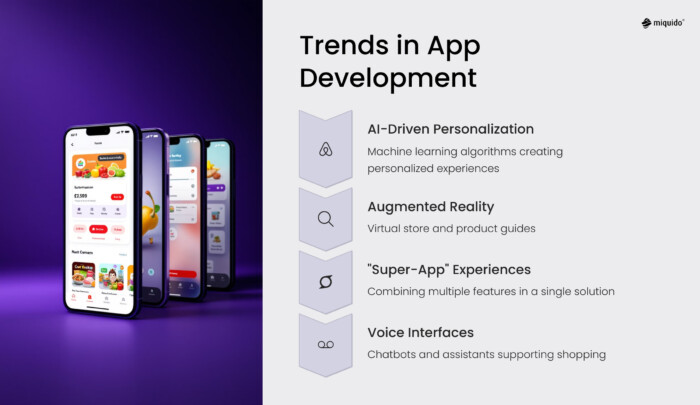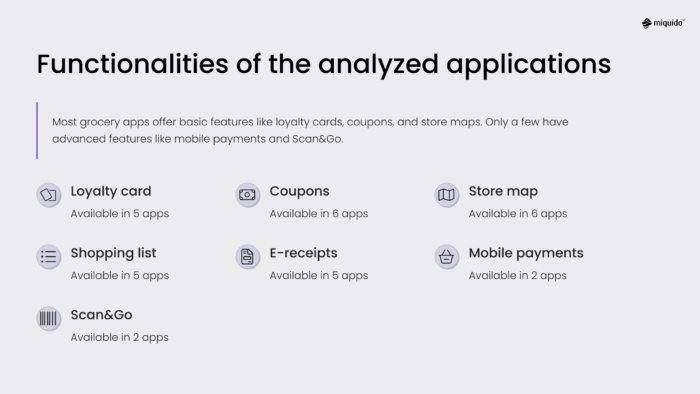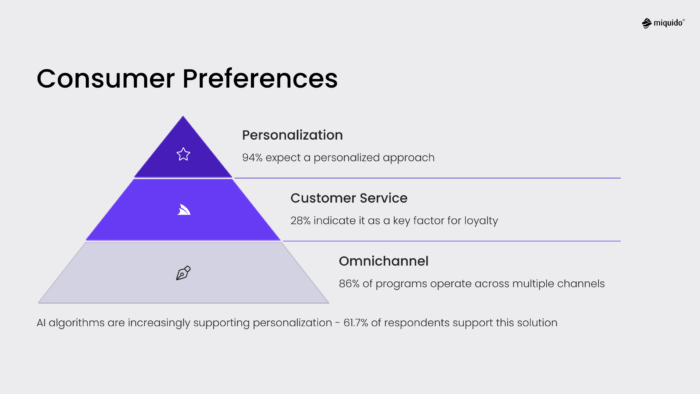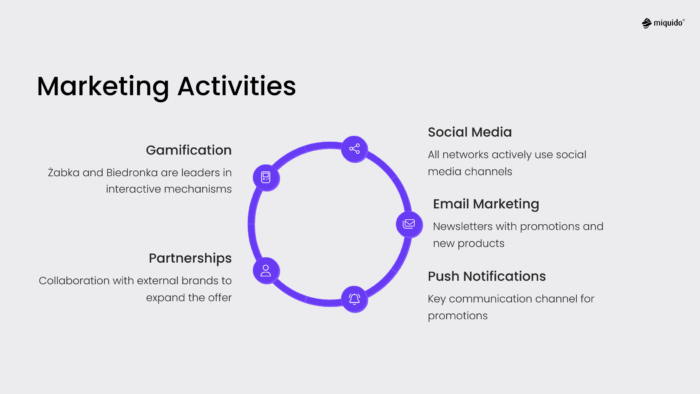Loyalty programs are a powerful tool for boosting engagement in retail. But why do some grocery retailers boast highly successful loyalty programs while others struggle with low and declining acquisition and retention rates?
A market research study helped our client solve this puzzle—turning insights into action and improving their loyalty program’s performance.

Background and challenges
A client, a leading grocery retailer, planned to modernize their mobile application, which had become inefficient and unintuitive for users. The existing solution failed to meet consumer expectations—its interface was complex, loyalty mechanisms did not engage users, and the coupon system required manual activation.
The client aimed to improve user retention, increase customer engagement, and introduce innovative features based on market analysis and emerging trends.
Scope of analysis
The project involved competitive benchmarking, analyzing mobile app functionalities, loyalty program mechanisms, and user retention strategies. The research focused on:
- Loyalty programs – models based on points, subscriptions, and gamification.
- Offer personalization – AI-driven promotions tailored to individual users.
- Coupon mechanisms – automated discounts and integration with shopping carts.
- IT integrations – mobile payments, Scan&Go, e-receipts, and geolocation.

Key findings
1. Modern loyalty programs
The analysis showed that traditional point-based programs are losing relevance. Users prefer more dynamic systems, such as:
- Personalized discounts – offers based on purchase history.
- Gamification mechanisms – interactive scratch cards, shopping missions, virtual rewards.
- Premium subscriptions – access to exclusive discounts and free deliveries in exchange for a fixed fee.

2. UX and automation are crucial for success
The study revealed that users dislike manual coupon activation – 19% of respondents identified this as a major issue. Competitive apps prioritize:
- Automatic coupon activation and discount application at checkout.
- Simplified navigation – an intuitive interface and quick access to key features.
- Better notification control – reducing excessive alerts and improving message relevance.
3. Technology drives competitive advantage
Leading competitors are adopting innovative features to boost customer retention, including:
- Scan&Go – enabling fast shopping without scanning items at checkout.
- E-receipts – digital purchase history, easier returns, and spending analysis.
- Geolocation-based offers – dynamic promotions based on a user’s nearest store.
- Mobile payments – integration with Apple Pay, Google Pay, and proprietary solutions.
Implemented recommendations and client benefits
Based on the analysis, a set of recommendations was developed to optimize the app and enhance its appeal:
- A redesigned loyalty program – combining premium subscriptions, automated discounts, and gamification.
- Automated coupon processing – eliminating manual activation.
- AI-driven personalization – dynamically tailored offers based on user preferences.
- A simplified user interface – improved navigation and easy access to core features.
- Integration of modern technologies – implementation of Scan&Go, e-receipts, and mobile payment solutions.

Conclusion
Market research and the adoption of advanced technological solutions enabled the client to transform their mobile app from an outdated tool into a modern loyalty platform. By leveraging AI, gamification, and automated discount mechanisms, the app became a competitive solution that effectively enhances user engagement and builds long-term customer loyalty.

![[header] case study enhancing mobile app performance and loyalty program efficiency in grocery retail](https://www.miquido.com/wp-content/uploads/2025/04/header-case-study_-enhancing-mobile-app-performance-and-loyalty-program-efficiency-in-grocery-retail.jpg)


![[header] case study enhancing mobile app performance and loyalty program efficiency in grocery retail](https://www.miquido.com/wp-content/uploads/2025/04/header-case-study_-enhancing-mobile-app-performance-and-loyalty-program-efficiency-in-grocery-retail-432x288.jpg)
![[header] off the shelf vs. custom ecommerce software](https://www.miquido.com/wp-content/uploads/2020/05/header-off-the-shelf-vs.-custom-ecommerce-software-432x288.jpg)

![[header] challenges of mobile commerce](https://www.miquido.com/wp-content/uploads/2025/02/header-challenges-of-mobile-commerce-432x288.jpg)
